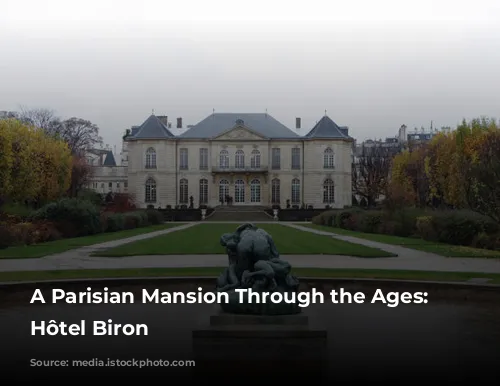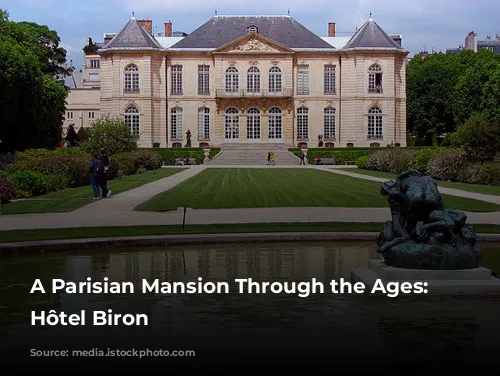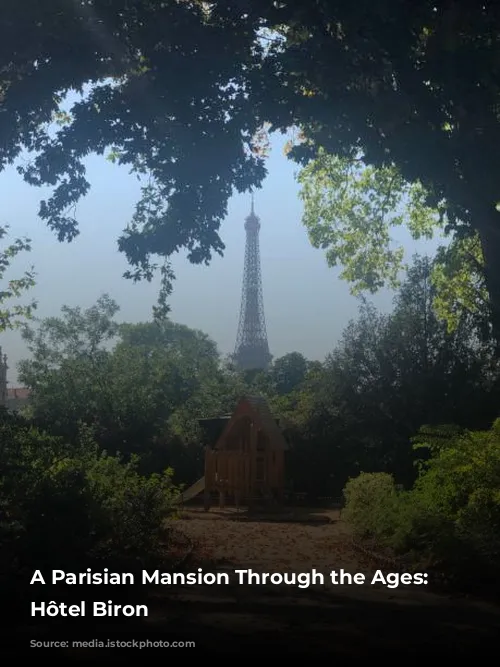The Hôtel Biron stands as a testament to history, having witnessed a kaleidoscope of occupants and transformations over centuries. Its journey began with the renowned architect Abraham Peyrenc de Moras, who built the grand mansion in the 18th century. The mansion, initially intended as a luxurious residence, was subsequently leased to the Duchess of Maine. While the exterior remained largely untouched, the Duchess made significant changes to the interior, altering its layout to suit her tastes.

A Garden Transformed
Upon the Duchess’ passing, the estate was acquired by Louis-Antoine de Gontaut-Biron, later known as Marshal Biron. He turned his attention to the gardens, a centerpiece of the property. While respecting the classical French design and the plantings established by the original owner, he expanded the ornamental garden and added a circular pool, introducing an element of English-style landscaping. The kitchen garden was relocated within the grounds, preserving its essential role. This era of the gardens’ evolution is well documented, thanks to engravings and detailed descriptions published in the late 18th century. The mansion, as a lasting tribute to its owner, became known as the Hôtel Biron.
Shifting Ownership and Transformations
Following Marshal Biron’s death, the estate saw a series of owners and tenants. In the late 18th century, the Duke of Charost transformed the kitchen garden into an English-style oasis, adding a water feature and hosting extravagant public events. During this period, the Hôtel Biron served as a temporary residence for Cardinal Caprara, representing the Holy See, as well as the Russian Embassy.

A Haven for Education
The property eventually found its way into the hands of three nuns, led by Reverend Mother Madeleine-Louise-Sophie Barat, founder of the Society of the Sacred Heart of Jesus. The nuns established a boarding school for girls in 1820, which brought with it a new era of adaptation for the mansion and its grounds. To accommodate their educational purpose, extensive modifications were made. As the years passed, original features were gradually removed and sold to fund the necessary renovations. The Marshal Biron’s pool was filled in, and a mound topped with a Virgin Mary statue took its place. By the end of the 19th century, the gardens had become a source of sustenance, serving primarily as a kitchen garden, orchard, and pastureland.

A Legacy of Faith and Learning
During the period of the nuns’ ownership, several buildings were added for educational and religious purposes. The most prominent addition was a chapel, designed by architect Jean Juste Gustave Lisch, completed in 1876. The Society of the Sacred Heart of Jesus maintained their presence at the Hôtel Biron until 1904, when they were evicted, and the property passed into the hands of receivers.

A Home for Artists
In the early 20th century, the Hôtel Biron welcomed a new group of occupants – artists, writers, and intellectuals. The estate was put up for sale, and while awaiting a buyer, tenants were allowed to occupy the mansion. Among them were Jean Cocteau, Henri Matisse, Isadora Duncan, and Clara Westhoff, whose husband, Rainer Maria Rilke, introduced the property to Auguste Rodin. The sculptor was immediately captivated by the mansion and its grounds. In 1908, Rodin rented four rooms on the ground floor, overlooking the terrace, for his studios. The garden, left in a state of untamed nature, likely inspired Rodin, leading him to display his sculptures and antique collection within its leafy embrace. By 1911, he had become the sole tenant of the entire building.
The Hôtel Biron has remained a testament to its rich history, having transitioned from a luxurious private residence to a haven for education and finally, a sanctuary for artistic inspiration. Each era has left its mark on the mansion and its gardens, shaping its unique character and preserving its enduring legacy.
